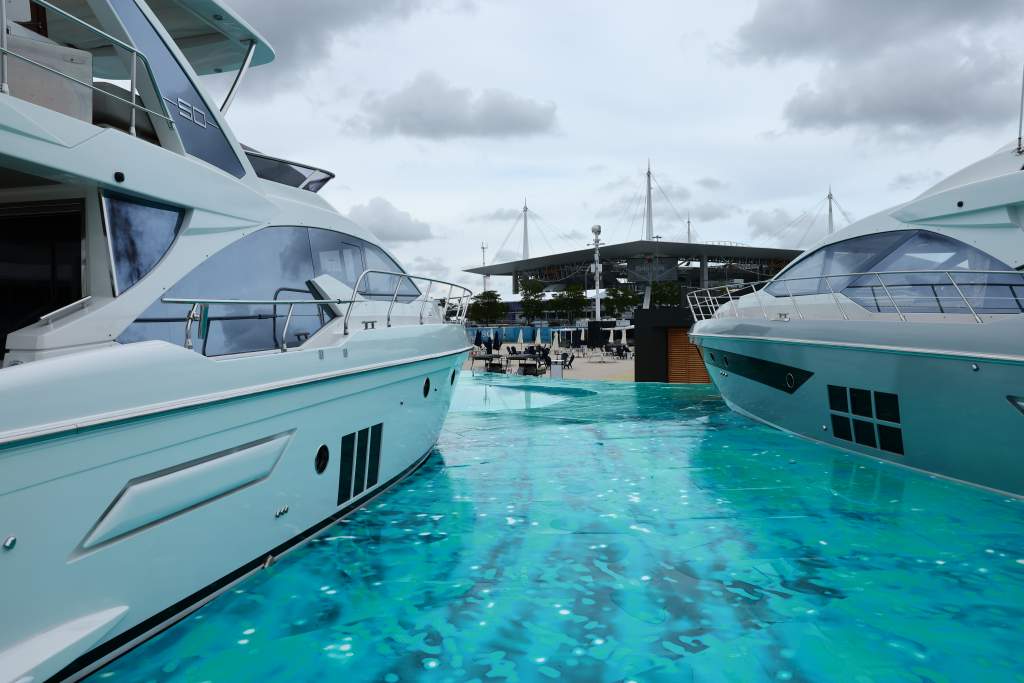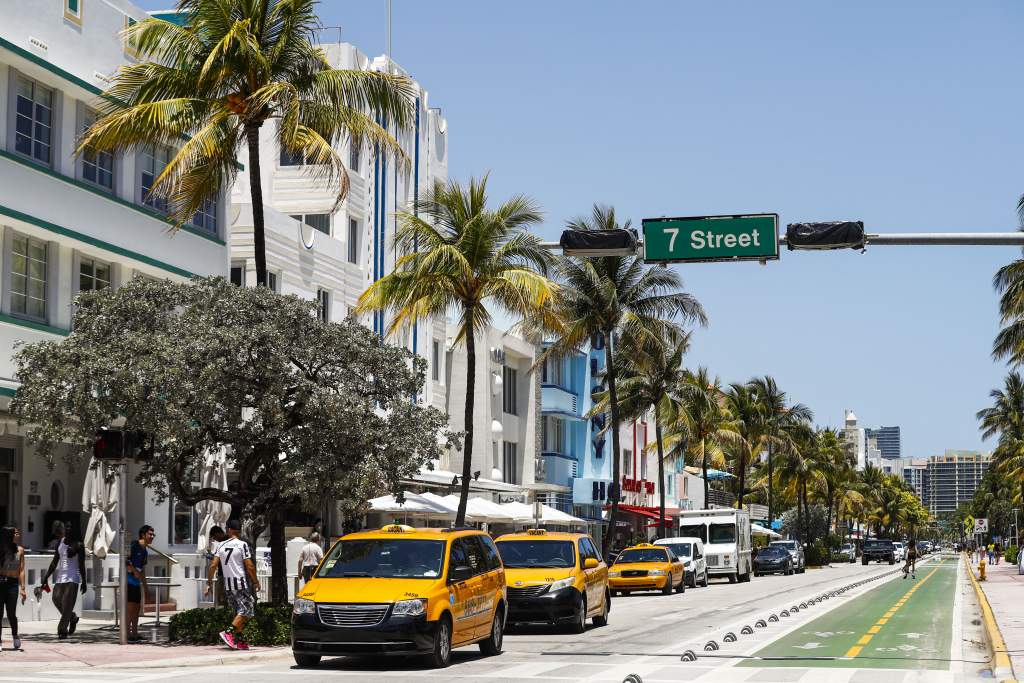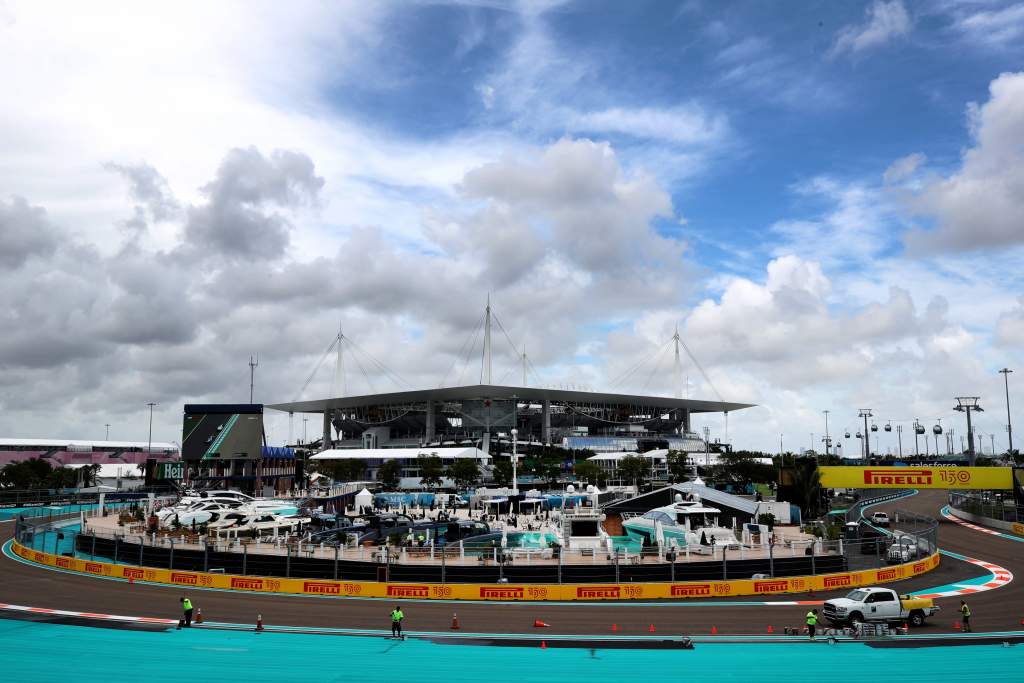Up Next

The hype around the Miami Grand Prix from Formula 1, its teams, and various identities on-site has set expectations that it will struggle to match from a purely sporting perspective.
Much as some will not want to hear it, though, Miami’s about more than that. While many grands prix are working to be much bigger and grander spectacles than ‘just’ a world championship sporting event, Miami is raising the bar.
From the hoops F1 jumped through to get a track greenlit and supported by the local authorities, to the massive demand for hospitality space and corporate ‘activation’, the investment in this race is arguably unlike anything F1 has seen before.
Welcome to the peak of what Liberty Media wants F1 in the USA to be. If you’re on-site you’ll probably love it. If you’re off-site, you might well be wondering what the hell the fuss is about. Especially as some elements look downright silly – like how F1 Twitter became briefly obsessed with the recreation of the Monaco marina on asphalt, towing in some fancy little boats and hosting them on pretend water.

There’s a lot of excitement for this event. Companies that have fallen over one another to be involved in this event, to be part of the spectacle, and it does create a sense of occasion around it – perhaps like no other grand prix.
That’s not as easy for people not on-site to notice but the key thing to recognise there, blunt as it may seem, is this is not for the benefit of those people.
Miami has a colossal ‘event’ focus, additional pageantry and heavyweight commercial backing. And that’s fine. The problem would be if every race gets like this, and the entire championship was corrupted.
Right now, there’s no harm in F1 moving from an ultra old-school, too-disorganised Imola where the emphasis is on tradition to a ‘destination race’ with a heavier corporate feel but massive potential reach with a completely different audience. Because no two races are the same.
Each has its own quirks, strengths, and weaknesses. Some are big celebrity draws, some are quiet. Some make for great races, some make for attractive commercial arrangements. F1 will never have a season full of Super Bowls, to reference the common comparison that gets thrown around whenever F1 seeks to up the spectacle of its events. But races like this achieve the closest all-round atmosphere to that.

Will the racing live up to it? If it does it’ll be one of the best grands prix of the year. For it will take a colossal sporting spectacle to equal the off-track hype. And maybe F1 is setting itself up for a fall in that regard. Maybe all the talk about how good the track could be will shut some critics up.
Ultimately the stakeholders won’t care either way, so long as the race at a distinctive, engaged new venue ends with a raft of high-paying, massively happy sponsors, after a week of high-profile exposure to an ever-growing American audience.
Is this to your liking? It may well not be. Personally, while it is already an entertaining new addition as a location and the stylish elements of this race do give it a ‘wow’ factor, this race has a lot to do to even match Austin (the recent US F1 benchmark and just a genuinely excellent Grand Prix) as an all-round sporting event.
And F1 is a sport, so it’s a shame if commercial exploits compromise the competitive element – Las Vegas, for instance, is one I’m wary of as that’s a clearly limited circuit design specifically so it can incorporate various city landmarks.

But we are not the target audience for destination races. There are many grands prix made for ‘us’ – the established F1 consumer, the traditionalists, the heavily invested.
The whole point of this grand prix is that F1 wants to make its footprint bigger and appeal wider. And while the race itself is what should matter most, given this is still a sporting event underneath the glitz and glamour, a race alone doesn’t capture the imagination of the masses.
The Miami Grand Prix, to a lot of us, only really matters for 90 minutes or so of Sunday afternoon. For F1, it is about a lot more than that.




